═════════════════════
═════════════════════
Food and Water
Good-quality food and fresh, clean water must be readily available at all times. The exact nutritional requirements of the hamster are not known. In the wild, they are omnivorous, feeding on plants, seeds, fruits and insects. Pet hamsters are best fed commercial rat or mouse diets containing at least 16% crude protein. These foods are usually available as dry blocks or pellets. These commercial diets can be supplemented with small amounts of dry, sugar-free breakfast cereals, whole-wheat bread, uncooked pasta, cooked chicken, tuna fish, cheese, fresh fruits and vegetables. The last 2 items must be thoroughly washed to avoid exposing pet hamsters to pesticide residues and possible bacterial contamination. (1)
Pet stores sell prepared hamster diets
available in boxes or bags. These diets
contain
large quantities of seeds and items rich in
oils. Consequently, if improperly
stored, they become rancid and lose their nutritive value. Furthermore, these oil-rich items promote
obesity. These types of foods can be
offered as a supplement to the commercial rat or mouse diets mentioned above. (1)
All food should be provided in heavy
ceramic crocks that resist tipping. The
sides of the crocks should be high enough to keep bedding and fecal material
out of the food, or the crocks should be elevated slightly above the bedding. (1)
Water is most easily made available and
kept free from contamination by providing it in one or more water bottles
equipped with ‘sipper’ tubes. Make
certain the ends of the tubes are positioned low enough to allow all residents
within the enclosure (especially juvenile hamsters over 1 week old) easy access
to them. Also make certain that very
young hamsters are strong enough to obtain water from these sipper tubes. (1)
Average food consumption is 10 to 15 g of
commercial pelleted rodent food per day for adult hamsters. Hamsters drink
approximately 5 ml of water per 100 g of body weight per day. This rate of
water consumption is similar to the gerbil, another rodent species indigenous
to the desert. In comparison, rats drink 10 ml of water per 100 g of body
weight each day.(14)
A unique feature of Syrian hamsters is the
well- developed pair of buccal or cheek pouches beneath the skin on the lateral
sides of the head. In the picture,
the cheek pouch has been reverted for
examination. (2)
The pouches are used to carry food and
nesting material. They also provide an easily accessible site for tumor
transplantation and induction. The cheek pouches have
been termed immunologically privileged sites because tumors can be transplanted or induced and not readily rejected by the hamster's immune
been termed immunologically privileged sites because tumors can be transplanted or induced and not readily rejected by the hamster's immune
system. The reason for this unique property
is poorly understood. It has been attributed to inadequate lymphocytic
drainage; however, there are lymph
vessels present in the cheek pouches . The
composition of the connective tissue of the pouches is believed to play a role
in tumor maintenance. (2)
Hamsters are well-known for collecting and
storing food in their burrows. Food is collected in the large cheek pouches and
carried back to the burrow. A hamster can stuff an amazing amount of food into
its pouches and when packed full, the pouches can extend back beyond the level
of the shoulder blades. The winter food stores can be enormous; one common
hamster's store was found to contain 90kg of cereals, pulses, seeds and root
vegetables! Poorer Chinese peasants have been known to make a living by digging
up the grain stores of grey hamsters. (7)
HAMSTER DIET
LIST
(based on HH's Fresh Food/Diet List Forum Topic by CanineCavyLover, HoppingHammy,
Christmas_Hamster, Jordyn and LunarFlame.)
RECOMMENDED REGULAR DIET:
- DAILY:
- 2 tablespoons of regular seed mix (or refer to lists) with hamster diet pellets
- EVERY OTHER NIGHT:
- Tiny pinch of flaxseeds, oats, and wheatgerm added to seed mix
- Nickel size of 3-4 different types of veggies (refer to lists)
- EVERY 3 DAYS:
- Dime-sized watery veggies (not for Dwarves or VERY RARELY)/sugary veggies
- 1 or 2 pieces Dime-sized fruit can be given every 3-4 days or once a week (or as you think fits into your hamsters' lifestyle) (not for Dwarves or VERY RARELY).
- TWICE A WEEK (preferably Monday and Friday)
- Dime-sized meat/protein food (refer to lists)
REFERENCE LISTS:
Key
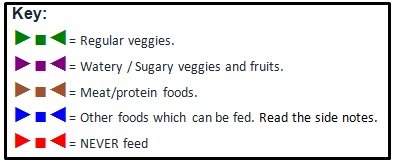 |
| Reference Colors |
Vegetables
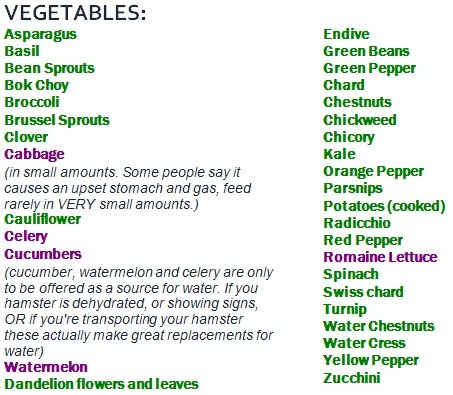 |
| List of Vegetables that can be consumed by hamsters. |
Other Foods
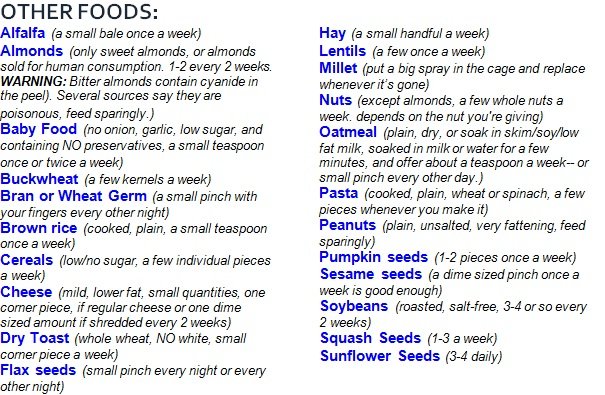 |
| List of other foods that can be consumed by hamsters. |
Meat / Protein Foods
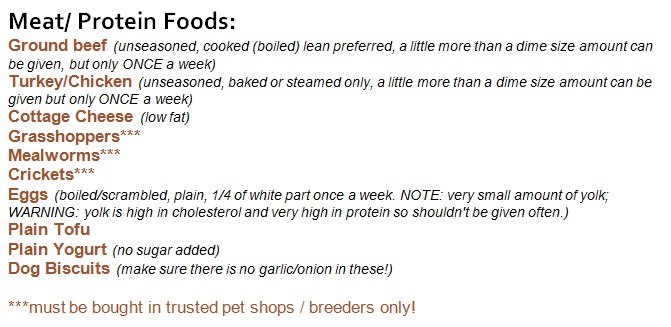 |
| List of Meat / protein foods that can be consumed by hamsters. |
Fruits
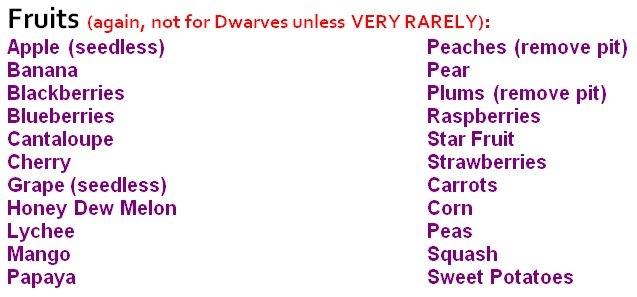 |
| List of Fruits that can be consumed by some hamsters. |
Never Feed
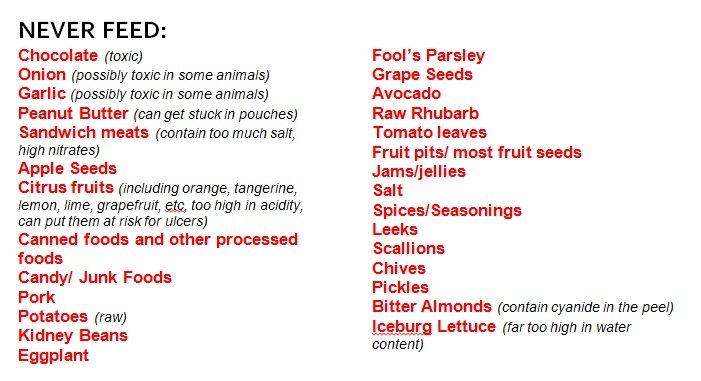 |
| List of foods, etc that can NEVER be consumed by hamsters. |
(by HH's SuzyHomemaker and MissPixy) (22)
- Buttercup
- Bluebell
- Ragwort
- Elder
- Lily
- Tulip
- Castor oil (or castor bean) plant
- Aloe vera plant: While listed as a toxic plant by pet organizations such as the ASPCA
and the RSPCA, produces a gel which many online communities (and as far as I
can tell some veterinary communities as well) to be safe for use and beneficial
for small animals with certain skin conditions and/or burns. It would appear
that while the plant its self is toxic, the gel inside the plant is not.)
- Amaryllis
- Chrysanthemum
- English ivy
- Dracaena sanderiana (also known as lucky bamboo or
ribbon bamboo)
ADDITIONAL REMINDERS:
- A lot of what is on this list can be offered daily. Dry ingredients such as nuts and seeds should be added to your standard daily mix, and then adding vegetables, protein and fruit (Syrians/ Roborovskis ONLY) every few days.
- Too much of any one thing is also harmful! Offering too much fruits and vegetables can cause diarrhea. The diarrhea is caused by excess moisture, this is not to be confused with wet tail.
- Make sure you wash all fruits and vegetables and nuts thoroughly before offering!
Hamster urine is milky white because it
contains calcium carbonate. The urine is highly concentrated and alkaline, with
a normal pH of 8. Because it is highly concentrated and alkaline, the urine
adheres to cage surfaces. Cages may need to be treated with an acidic agent to
remove urine prior to routine cleaning. Accumulation of hamster urine on cages
can lead to foot abrasions or sores. (14)
Partial
or total neglect
of hamsters by
their owners is
an unfortunate but
common problem. Neglectful owners
fall to provide adequate supplies of food and water for their pets, and are
unaware of any medical problems.
Potentially serious dehydration, starvation, stomach ulcers, eating of
bedding material, and even cannibalism have all been reported as a result of
food and/or water deprivation.
Sipper
tubes often become
clogged or continually
contact bedding material,
thereby draining the water bottles to which they are attached. Water bottles and their delivery tubes must
be checked constantly for these problems. (1)
Parents must set a ‘good example’ for their
children and teach them a routine of care and maintenance of their pet
hamster. Careful observation and
vigilant attention to their hamster’s every need should be emphasized. Neglect to any degree is intolerable and
always results in some detriment to the hamsters. (1)
FOOD AND NUTRITION MYTHS AND MISCONCEPTIONS
(by HH's Member Christmas_hamster) (22)
Myth: Any seed mix is fine for a hamster.(22)
Truth: Hamsters, just like any creature,
have specific nutrition needs and not all hamster foods are made equally in
this regard. The first thing that must be considered is whether you want to use
a seed mix or a lab block as your hamster’s staple diet. Both have their
advantages and disadvantages. Quality lab blocks provide complete nutrition in
compressed blocks of food and do not leave room for hamsters to be picky.
However they tend to be rather boring for hamsters. Seed mixes provide variety
and if they are mixed well then they also provide complete nutrition. The
downside to seed mixes is that unless you leave the food until it is all eaten
then the hamster can be picky and might not get all of the nutrition that the
mix provides.(22)
Some things that you
need to look for in quality hamster foods include: that the protein percentage
is between 17-21% for hamsters over one year of age (for younger hamsters,
pregnant hamsters and nursing hamsters a higher protein level is better at about
30-35%), while the fat content is between 4-6%. You do not want a food that has
a lot of sweet products such as cane molasses or honey, especially if you have
a species of hamster that is prone to diabetes (such as Chinese, Russian
Campbell Dwarfs and Winter White Dwarfs.). Specifically with seed mixes you
want a mix that is well balanced and isn’t overloaded with fattening foods such
as sunflower seeds, peanuts and pumpkin seeds. If you have diabetes-prone
hamsters then you also need to watch that there aren’t too many sweet foods
such as corn, corn products, peas, carrots, and fruits. If you’re hamster is
diabetic then you need to make sure that these foods are picked out and since
picking out too much food from a mix can throw it off balance, you want a mix
that doesn’t contain a lot of these foods.(22)
Myth: Sunflower seeds are unhealthy and
should only be fed as treats/ not at all.(22)
Truth: Sunflower seeds are much believed
to be unhealthy seeds that are too fattening for hamsters. For years many
people believed that they should be avoided or used as the odd treat. The truth
is sunflower seeds are actually very healthy. They contain so many essential
nutrients that help a hamsters body stay healthy. From heart health to
cholesterol-lowering, sunflower seeds really do so much for a hamster’s well
being. Now as with any food, moderation is still they key. Too much of a good
thing is not healthy either. Ensuring that your hamster receives three to six
sunflower seeds a day or so will give your hamster the balance that they need
in their diet.(22)
Myth: If I feed my hamsters meat then they
will become cannibals.
-or-
If I feed my hamster
meat then it will want to eat me.(22)
Truth: Hamsters are actually omnivores.
This means that they can eat both meats and vegetation just like humans. In the
wild along with grains and plant matter hamsters will also eat insects. They
are capable of eating cooked meats (plain with no spices or flavours) too. They
will not become cannibals nor will this make them want to eat you. This is one
of those urban myths that really doesn’t even have a reason for being around.(22)
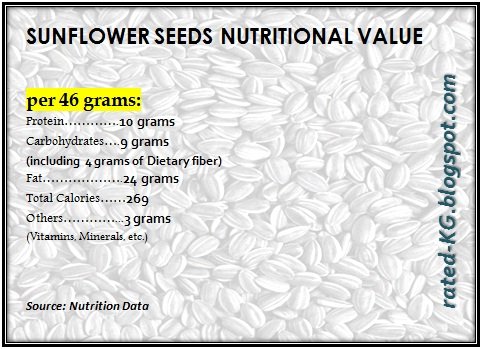 |
| SUNFLOWER SEEDS NUTRITIONAL VALUE |
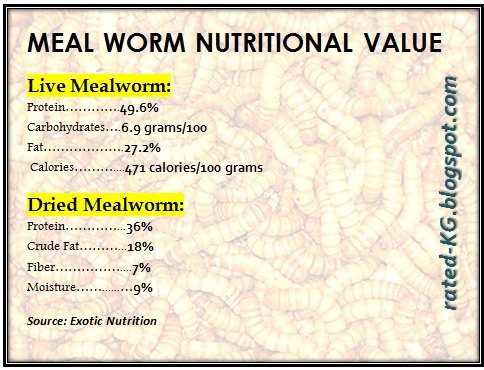 |
| MEAL WORMS NUTRITIONAL VALUE |




VitaLife Grain-Free dog food contains many essential vitamins. This healthy weight grain free dog food has reduced calories and fat to support weight reduction and fiber to help your dog feel full. Best grain free cat food
ReplyDelete